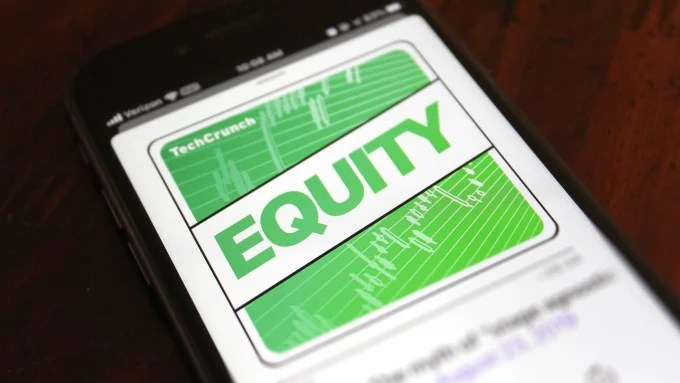Adam Keesling
As of late June, over 22,000 tech employees had been laid off this year, a number expected to increase throughout the year. If you’ve found yourself in this position, you should understand exactly what will happen to your equity, because it’s likely impacted by your termination, and inaction could cost you a life-changing sum of equity.
By the end of this guide, you’ll understand:
- The basics of equity compensation.
- How leaving your company impacts the status of your equity.
- Strategies to save your equity from expiring.
Equity 101
Tech employees are well aware that their stock options are a key element of their compensation package, it vests over time, and that they purchase this equity at its original price (the “strike price”) — if you need a refresher you can browse resources here.
While equity is an excellent opportunity to build wealth, it’s a challenging decision if and when to purchase your shares. When you consider changing jobs, you can control the timeline so you purchase equity accordingly. When you’re terminated from your company, you lose this flexibility and control.
First, you should know that any unvested shares are gone. When terminated, the only question is what you will do with your vested and unexercised shares. Stock options have a “post-termination exercise window,” which refers to the period of time between when you exit the company and when your unexercised, vested stock options expire. (The post-termination exercise window applies to both voluntary and involuntary terminations.)
When your stock options expire, they are returned to the company. When this happens, you (the former employee) retain none of the value. So be careful: If you leave your company and you haven’t exercised your options yet, they now have an expiration date. When this date arrives, you lose them.
While some companies have extended the post-termination exercise window, it’s typically 90 days. This means you’ll have approximately three months from your termination date to make a challenging decision: Do you exercise your stock options or allow them to expire? And if you do exercise those options, how will you pay for both the options and their tax consequences?
It’s never a calm time after you lose your job, especially during a recession. It can feel especially chaotic to contemplate exercising equity at a time when you’re also worrying about your personal finances.
If the company has increased in value during your employment, the tax obligations connected to exercising your options are often much more expensive than the exercise cost itself. The exact amount of taxes you’ll have to pay depends on many things, including the number of options you hold, the strike price, the current value of your company’s shares, your personal financial situation and the types of options you hold.
In total, you may require hundreds of thousands of dollars to afford exercising all of your options. Investing this sum of money into a risky, illiquid asset can be very risky or unaffordable for those without money to lose.
What does the post-termination exercise window mean for me?
If you have a 90-day, post-termination exercise window (common at most companies), your unexercised stock options will expire 90 days from your termination date. This information should be available in your offer letter. If it’s not, I’d highly encourage you to reach out to your former manager (or the company’s HR team) to request this information.
If you have more than a 90-day post-termination exercise window, your unexercised incentive stock options (ISOs) will be treated as non-qualified stock options (NSOs) — with NSO tax treatment — if you choose to exercise them after 90 days from your departure date. You’ll have up until the post-termination exercise window closes to do so.
What actions can I take today?
The most important step is making a decision. Doing nothing is still a decision, and investing a small amount of time to figure out what you want to do will minimize your long-term regret and potentially lead to a life-changing sum of money.
I recommend acting thoughtfully, but urgently. Here are some choices you may consider:
1. Negotiate
If you’re able to negotiate, request an extension of the exercise window and review any restrictions on sources of liquidity. Oftentimes, your manager didn’t make the choice to lay you off, and your former employer may be sympathetic to this kind of request.
If you have ISOs, they are legally bound to expire in 90 days. However, it’s legal for NSOs to have a longer exercise window, so if you have ISOs, you can negotiate to convert them into NSOs after 90 days. If you have NSOs, you can simply ask for an extension of the exercise window.
If you can negotiate a much longer window (two to 10 years) for the options you already earned (only the vested options), you can hold off on making any other decisions about exercising until you are ready to incur the risk. Be advised: If the company increases in value before you exercise, your tax obligations will likely increase as well.
One additional negotiation point revolves around restrictions on selling your equity. Many option plans have restrictions on selling your options without company or board consent, which can decrease your flexibility in selling them for liquidity. Additionally, some plans may restrict various types of loans that involve the equity. Ideally, you want to negotiate maximum flexibility with the help of an attorney experienced in this area.
ISOs have many other nuances. For example, ISOs are only allowed to be worth up to $100,000 in a single year. So if your shares are worth more than $100,000, some of them must be NSOs by law. Additionally, ISOs have a tax benefit on both the exercise and the sale events.
Upon exercise, you pay no tax unless you trigger AMT expense. Upon sale, you can qualify for the lower long-term capital gains rate if it’s been more than a year since exercising and more than two years since the grant date.
2. View your options as an investment decision
When you exercise your options, you’re making an investment decision. So the first thing you should do is figure out if you think your former company is a good investment.
The best way is to answer a few basic questions about your company:
- Do you still believe in the founder?
- Does the company have product-market fit?
- What’s the revenue and growth rate?
- Do the employees have exceptional talent, drive and integrity?
- Do customers love your product or service? Is it differentiated from other offerings? How hard/easy is it for a customer to switch?
- What is the net retention rate — i.e., are existing customers staying with the company and expanding their use?
- What is your strike price compared to the current value, and what do you think the value will be in two to five years?
While there are several ways to apply complex formulas to model the value of the company, answering the above questions will often put you into the bucket of either “confident” or “hesitant” about the company. This is sufficient to take the next step.
3. Figure out your budget
How much money can you safely invest in risky, illiquid assets? There are a few ways to formulate this, but one simple method is totaling up your current and future assets and liabilities (including any sizable purchases you have planned).
Your budget for risky, illiquid assets is generally only available after fulfilling your nearer-term priorities (putting food on the table, paying down student loans and paying for rent) and maintaining an emergency budget (recommended to be three to six months of living expenses). Keep in mind that investing in a startup often means the money is tied up for several years at a time as you wait for a liquidity event.
4. Decide on financing
If you want to purchase your options before they expire, the first source of financing you could use is your existing liquidity, such as cash (from your bank accounts) or public investments (from your brokerage accounts).
Existing liquidity is a popular option because it’s simpler and cheaper than other sources. That said, most people don’t have the cash required to exercise options at the drop of a hat (often a six- or seven-figure payment including the tax bill). And once you use your cash to exercise and pay taxes, you cannot get it back until there is a liquidity event.
The second source of financing that you can choose is a non-recourse loan. This is a loan that goes to finance your options. The “non-recourse” part means that if your company doesn’t work out, you may not be on the hook for any payment.
Non-recourse loans end up being one of the most common ways to finance post-termination option exercising, but they can be much more expensive (often 20% to 50%+ of the value of the options).
Even though it’s surprising, this math makes sense! The investor is underwriting something that may very well go to zero and they don’t have any collateral to collect if things do go wrong, so they charge a high rate to the borrower (you). Additionally, non-recourse loan providers often only originate loans for well-known, objectively healthy companies. If your employer isn’t on their list, this may not be an alternative for you, or the cost may render the transaction unappealing.
An additional source of financing is secondary sales, where either a fund or an individual purchases some or all of your options from you. Many stock option plan documents have restrictions on these sorts of sales, and you should consider consulting a lawyer before engaging in a secondary sale.
For a secondary sale, parties typically negotiate the price. For it to be appealing to you, this price must cover the exercise price, taxes and generate some profit for you. Some of these transactions allow the employee to exercise all vested options, pay taxes and only sell a portion of the options to finance the deal.
This process is similar to a cashless exercise of public equity. Sometimes your former employer will have board members, investors or even approved secondary market-makers with whom you can negotiate a deal.
The final source of financing is a recourse loan. With this loan, you use the proceeds to purchase your options (similar to a non-recourse loan). However, the difference is that if the shares go to zero, you will need to pay back all of the money. This financing method is much riskier — it can get you into really troublesome situations like lenders coming for your house or other assets.
Consider these factors at your next job
All of the above describes how to get yourself out of a less-than-ideal situation. For your next job, be proactive to avoid this scenario. To maximize your chance of success, first make sure you have a plan for exercising or not exercising your options when you join the company.
Even though it’s annoying to learn about the alphabet soup of information about your equity, it could be the most important financial decision that you make. I recommend my friends to: “Take a day, learn everything you can, and even write yourself a short memo explaining your decision whether or not to exercise their stock options.” Your decision should balance your living expenses, sources of cash (salary, investments), risk tolerance and confidence in both the company and your other assets.
Additionally, you can join a company that is more friendly to employees. Explicitly ask your interviewer about the length of their post-termination exercise window. While it’s not a requirement to choose a company with a longer window, the greater their length, the more time you have to exercise.
Disclaimer: The information contained in this column is provided by Compound for general informational purposes only and should not be considered as specific financial or tax advice to you.
























